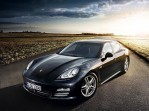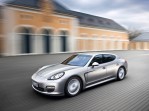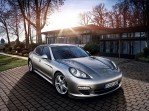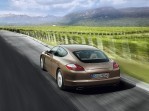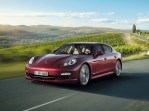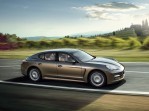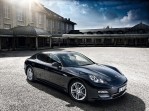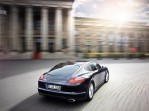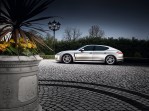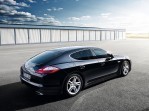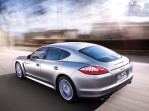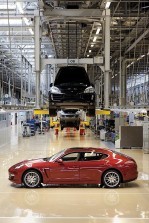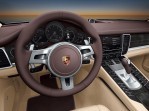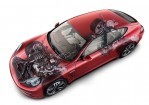Segment: Upper Premium
Production years: 2009, 2010, 2011, 2012, 2013
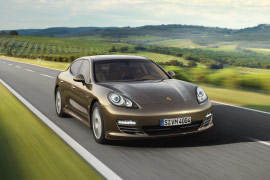 29 Photos
29 PhotosThe Panamera 4 was the entry-level all-wheel-drive version for the Panamera, the long-waited four-door Porsche. The German car-maker invested a billion euro in the new project.
At the 2009 Shanghai Auto Show, the German car-maker introduced its newest range: the Panamera range. It was the last piece of the puzzle. After the entry-model Boxster, the well-known 911, and the big SUV Cayenne, Porsche was ready to show its contender in the sport-sedan market. In the beginning, there was only the S, the 4S, and the Turbo versions. The base-model Panamera and Panamera 4 were introduced in 2010.
The Panamera's headlights resembled those installed on the Cayenne. The profile resembled an elongated 911 or the 989 concept-car. On the front fenders, two vents were used to extract the air within the wheel-well and decrease the front-lift effect. In the back, the taillights resembled those found in the Cayman. In the back, on the trunk-lid, a retractable wing was installed. It was automatically extended at speeds over 120 kph (74.5 mph).
Inside, the Panamera 4 designers took their inspiration from the Vertu luxury mobile phones. A four-seat layout was the only option, with a big center console that separated the driver from the other passengers. In the back, there was a decent room for adults and since it was a hatchback it could get an impressive amount of luggage. The dashboard was typical for a Porsche, with round dials and centrally-mounted tachometer.
The entry-level Panamera featured a 3.6-liter V6 engine carried-over from Audi. It was paired as standard to a 6-speed manual. A 7-speed PDK (dual-clutch) was on the options list. The PTM (Porsche Traction Management) was carried-over from other Porsche models. It was based on a multi-clutch center differential system (Haldex).
PORSCHE Panamera 4 (907) 2009, 2010, 2011, 2012, 2013
- 3.6L V6 7AT (300 HP)
PORSCHE Panamera 4 (907)
3.6L V6 7AT (300 HP)
ENGINE SPECS - 3.6L V6 7AT (300 HP) | |
|---|---|
| Cylinders: | V6 |
| Displacement: | 3605 cm3 |
| Power: | 220 KW @ 6200 RPM 300 HP @ 6200 RPM 295 BHP @ 6200 RPM |
| Torque: | 295 lb-ft @ 3750 RPM 400 Nm @ 3750 RPM |
| Fuel System: | Direct Injection |
| Fuel: | Gasoline |
PERFORMANCE SPECS | |
|---|---|
| Top Speed: | 160 mph (257 km/h) |
| Acceleration 0-62 Mph (0-100 kph): | 6.1 s |
TRANSMISSION SPECS | |
|---|---|
| Drive Type: | All Wheel Drive |
| Gearbox: | 7-speed automatic (PDK) |
BRAKES SPECS | |
|---|---|
| Front: | Ventilated Discs |
| Rear: | Ventilated Discs |
TIRES SPECS | |
|---|---|
| Tire Size: | 245/50 R18 Z || 275/45 R18 Z |
DIMENSIONS | |
|---|---|
| Length: | 195.7 in (4971 mm) |
| Width: | 76 in (1930 mm) |
| Height: | 55.8 in (1417 mm) |
| Front/rear Track: | 65.3/65.4 in (1,659/1,661 mm) |
| Wheelbase: | 115 in (2921 mm) |
| Ground Clearance: | 3.31 in (84 mm) |
| Cargo Volume: | 15.7 cuFT (445 L) |
| Aerodynamics (Cd): | 0.3 |
WEIGHT SPECS | |
|---|---|
| Unladen Weight: | 4012.4 lbs (1820 kg) |
| Gross Weight Limit: | 5291.1 lbs (2400 kg) |
FUEL ECONOMY (NEDC) | |
|---|---|
| City: | 18.4 mpg US (12.8 L/100Km) |
| Highway: | 32.7 mpg US (7.2 L/100Km) |
| Combined: | 24.5 mpg US (9.6 L/100Km) |
| CO2 Emissions: | 225 g/km |








